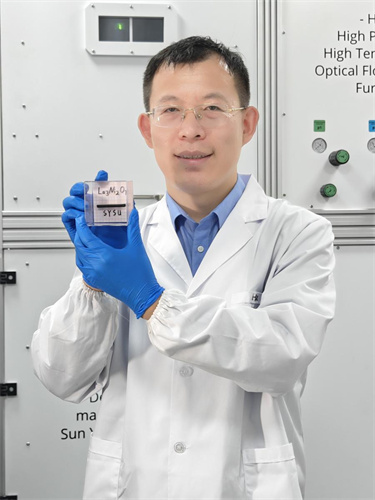
Chinese scientist Wang Meng shows a sample of a nickelate, which has been found to have high-temperature superconductivity. [Photo provided to chinadaily.com.cn]
Chinese scientists have observed high-temperature superconductivity in single crystals of a nickelate, which will help solve the superconductivity mechanism and unleash more applications in fields such as information technology and aerospace technology.
The report on the research, entitled "Signatures of superconductivity near 80 K in a nickelate under high pressure," was published in international science journal Nature on Wednesday.
Superconductivity was discovered in a cuprate in 1986, which subsequently led to applications in fields including nuclear magnetic resonance imaging and magnetically levitated trains.
The underlying superconductivity mechanism, however, remains unsolved.
The new discovery, which took more than three years, provides a new family of compounds to investigate the high-temperature superconductivity mechanism, said Wang Meng, deputy dean of the School of Physics at the Guangzhou-based Sun Yat-sen University, who led the research.
If the mechanism is solved, more applicable superconducting materials can be designed and developed with the help of computing and artificial intelligence technologies, Wang said.
More applications will be possible in fields such as the defense industry, information technology, massive science engineering, industrial processing, electricity, bio-medicine, transportation and aerospace, he said.